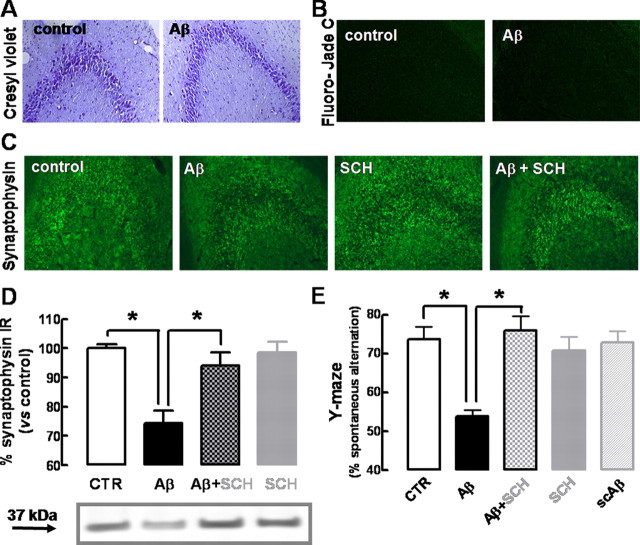Figure 2.
β-Amyloid administration causes a selective synaptotoxicity and memory dysfunction, which is prevented by blockade of adenosine A2A receptors. Rats were treated with Aβ1-42 (2 nmol, i.c.v.) or water (control). The A2AR antagonist SCH58261 (0.05 mg/kg, i.p.) was administered daily starting 30 min before Aβ, and rats were behaviorally analyzed after 15 d. A, B, Cresyl violet staining of Nissl bodies (A) and Fluoro-Jade C staining of neuronal death (B) in hippocampal sections from control and Aβ1-42-injected rats. C, D, Immunohistochemical labeling with anti-synaptophysin in hippocampal sections from rats injected with water (control), Aβ1-42 (Aβ), SCH58261 (SCH), and Aβ plus SCH (images representative of 5 experiments) (C) and quantification by Western blot analysis (D) of synaptophysin immunoreactivity in hippocampal membranes from these different experimental groups (data are mean ± SEM from 7 experiments; *p < 0.05). E, Spontaneous alternation in the Y-maze test of the same groups of rats, as well as rats injected with the nonamyloidogenic scrambled Aβ1-42 peptide (scAβ) (data are mean ± SEM from 9 rats; *p < 0.001).

